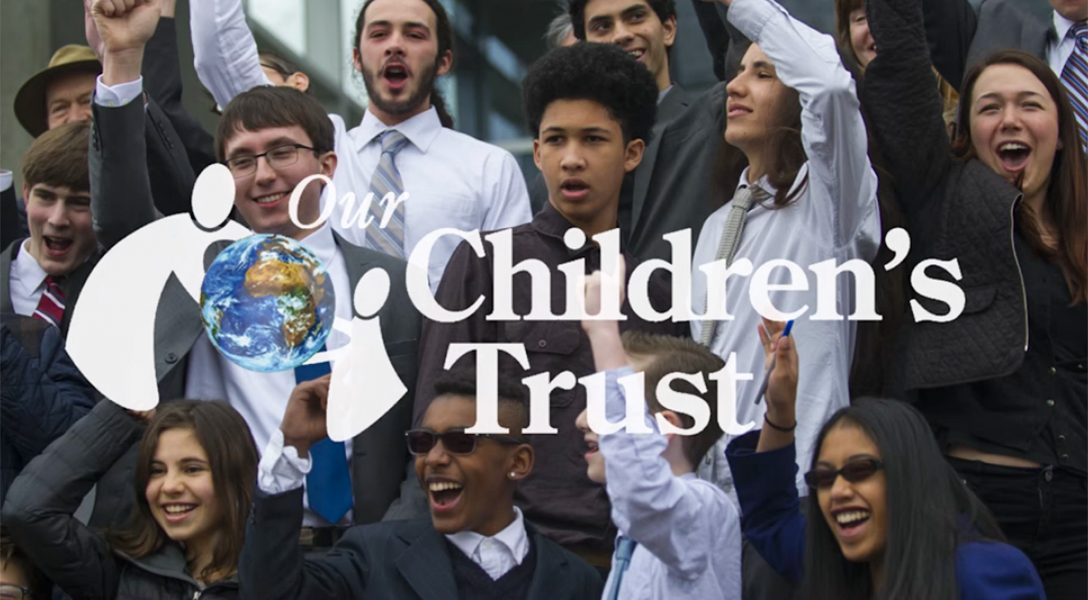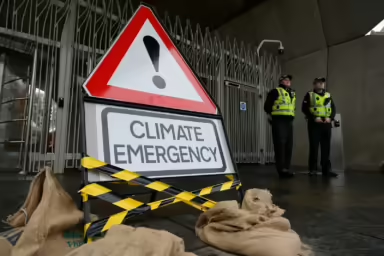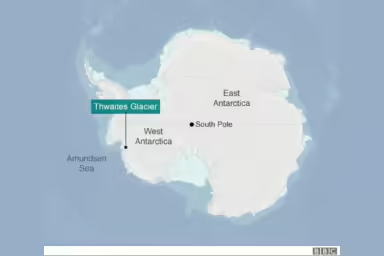The courts have the power to set a deadline for federal agencies to slash carbon emissions. Or make Big Oil liable for climate damages. Could Hurricane Harvey be a factor in their decision?
Sooner or later, the courts will be in the path of Hurricane Harvey. The mega-rainstorm that left millions homeless could become Exhibit A in the legal argument that the courts have to act to prevent future disasters. Climate scientists do not focus on individual storms but their findings have been clear for decades: climate change will make hurricanes more intense and dramatically increase the chances of “500-year” floods happening in a city like Houston three years in a row.
Harvey has struck at a moment when judges across America are grappling with lawsuits over global warming. Will the courts intervene in a political system that denies climate change and impose cuts in carbon emissions? Will they make the fossil fuel industry liable for coastal flooding? Hurricane Harvey, a landmark event, might pave the way for a landmark decision that a stable climate is a fundamental right.
The climate fight is being fought on a broad legal front. A group of “climate kids” are suing the US government for violating their rights to life, liberty, and a healthy environment; New York State is taking Exxon to court for climate fraud; and coastal communities in California are demanding damages from three dozen of the world’s largest fossil fuel companies.
There is now three times more climate change litigation in the United States than in the rest of the world combined, according to the UN.
The most important case to date seeks to put Donald Trump on trial, along with Scott Pruitt, the head of the Environmental Protection Agency (EPA). The 21 plaintiffs of Juliana et al. v. United States et al. — children and youth ages 10 to 21 — accuse the US government of failing to protect future generations from climate change. The federal lawsuit was filed on their behalf by Our Children’s Trust in Oregon.
It “is no ordinary lawsuit,” wrote Judge Ann Aiken of the US District Court for the District of Oregon in a decision green-lighting a trial. “It alleges that defendants’ actions and inactions — whether or not they violate any specific statutory duty — have so profoundly damaged our home planet that they threaten plaintiffs’ fundamental constitutional rights to life and liberty.”
Some federal agencies have known about climate change for decades, the suit argues, but the government still massively subsidizes fossil fuel production. “The US government, more than anyone else, is responsible for the level of carbon dioxide pollution that will determine the climate in our lifetimes,” wrote the plaintiff who gave her name to the court case, Kelsey Cascadia Rose Juliana, in a recent letter to her local newspaper.
Judge Aiken made headlines when she declined to dismiss the case, acknowledging that “the right to a climate system capable of sustaining human life is fundamental to a free and ordered society.” She set a trial date for February.
“The courts are the only way we have right now to protect our rights. Congress and the executive branch are not functional on this issue,” Jacob Lebel, one of the plaintiffs, told WhoWhatWhy. Lebel, who is 20, says he first began worrying about climate change at the age of nine when he saw the film, An Inconvenient Truth. “Our entire generation is under a form of discrimination. We will bear the full brunt of the physical changes of climate change and the social unrest it causes.”
The government’s lawyer in the case, former coal lobbyist and Trump appointee Jeffery Wood, appealed the case to the United States Court of Appeals for the Ninth Circuit before it even went to trial (using a rare legal tactic called a writ of mandamus).
Can Trump’s legal team nix the “trial of the century?”
Wood asserts that the court case, if not dismissed, has the potential to be “disruptive to the continuing operation of the United States Government,” saying it would “cripple” federal agencies if they were forced to provide the records of communications between the government and the fossil fuel industry.
Philip Gregory, the young plaintiffs’ co-counsel, told WhoWhatWhy he will reassure the Ninth Court over these and other “misleading claims.” He expects the trial to proceed as scheduled.
“There are no clear indications either way,” says Michael Blumm, a climate expert at Lewis and Clark Law School. “Both the magistrate judge and the trial judge seemed quite sympathetic to the plaintiffs’ claims. But Juliana v. United States is pathbreaking. It could be the Ninth Circuit wants to correct that. It’s all speculation at this point.”

Trump inherited Juliana v. United States, which was filed against the Obama administration in 2015. Obama’s Justice Department conceded in court that “current and projected atmospheric concentrations of greenhouse gases threaten the public health and welfare of current and future generations” but rejected the young citizens’ right to sue the government over it. Since Trump pulled out of the Paris climate agreement, he can no longer claim, as did Obama’s lawyer, that the executive branch is addressing climate change “by coordinating with other nations.”
Three fossil fuel industry trade associations representing most of the world’s largest fossil fuel companies — the American Petroleum Institute (API), the American Fuel and Petrochemical Manufacturers and National Association of Manufacturers — originally joined the case voluntarily as co-defendants because the lawsuit is a “direct threat to [their] businesses.” They pleaded for permission to pull out when judge Aiken set a trial date (permission was granted). API, America’s most influential oil and gas lobby group, did not respond to repeated requests by WhoWhatWhy for the reason behind its withdrawal from Juliana v. United States.
A possible explanation is the request for documents filed by the plaintiffs and the prospect of top energy company executives being hauled into court to answer the kids’ questions. ExxonMobil is a member of API and its former CEO, Trump’s Secretary of State Rex Tillerson, might be asked under oath why Exxon attacked the scientific consensus on climate change decades after it was allegedly confirmed by the company’s own scientists.
If the lawsuit moves forward, climate change denialism will also be on trial. “Does the government admit this [climate change] is happening?” asked US Magistrate Judge Thomas Coffin at a hearing in April. “Or does the government deny it? And if so, what evidence does the government plan on presenting at trial? We need some indication from the government as to what it plans to argue.”
Most likely, Wood will try evade such questions while maintaining the same legal strategy as Obama, arguing that the separation of powers means the courts cannot order the president to fight climate change.
But the Trump administration’s hostility to empirical research is unlikely to play well in a court of law. “When you go to trial, a case is based on evidence,” says Philip Gregory. “The evidence here is the science. We’ll put the science before Judge Aiken.”
Some of that evidence will be introduced by James Hansen, the former director of NASA’s Goddard Institute for Space Studies and one of the first scientists to alert the world to the dangers of climate change in the 1980s. His granddaughter, Sophie, is a plaintiff.
Hansen led an international team of scientists in trying to put a figure on what it will cost to suck CO2 out of the atmosphere and save human life as we know it. Their study in the journal Earth System Dynamics estimates future generations will have to spend an unimaginable $530 trillion on “negative emissions” technology — if nothing is done about climate change.
Should the 21 climate kids prevail in Juliana v. United States, the federal government would be forced to act to slash carbon emissions to protect future generations. This has already happened in The Netherlands, where a citizen’s lawsuit in 2015 led to a court’s historic ruling that requires the Dutch government to cut carbon emissions. That decision is under appeal.

A Wave of State Court Cases
.
Even if federal courts fail to act, state courts could become the front line in battles over climate change.
Our Children’s Trust has tested its legal strategy at the state level, filing climate lawsuits in every state in the nation on behalf of children and youth. In a breakthrough legal victory, young plaintiffs in Washington State secured a court order forcing the state’s Department of Ecology to come up with a plan to reduce carbon emissions.
In California, Marin and San Mateo counties and the city of Imperial Beach filed lawsuits in late July in their local Superior Courts against a long list of fossil fuel companies over rising sea levels. They accuse the companies of knowing since the 1970s that their products would create catastrophic climate change.
A sea level rise study commissioned by San Mateo suggests that $24 billion in assets are at risk, including San Francisco Airport.
“It is a straightforward case for damages,” explains their lawyer, Vic Sher. “We intend to recover the costs of dealing with climate change.”
To date, climate lawsuits targeting individual companies have been unsuccessful. The native Alaskan village of Kivalina, which will soon be completely flooded, sued oil, coal and power companies for eroding its coastline in 2008. The case was dismissed in 2009 and the Supreme Court declined to hear the villagers’ appeal in 2013.
Sher notes there are key differences between the coastal cases he represents and Kivalina. “We’re relying on well-established models of California state law rather than federal law.”
The San Francisco-based environmental lawyer has a history of going up against big oil companies in state court and winning, notably in cases over a gasoline additive (MBTE) that contaminates groundwater.
He cites the rapid progress of climate change science, particularly in measuring rising sea levels. “[The science] has now advanced to the point where we can draw very strong causal connections between emissions and impacts [and] tie them to particular corporate sources.”
Sher believes he has been handed a potential smoking gun by investigative journalists from the Los Angeles Times, Columbia School of Journalism and InsideClimate News. They have opened a “narrow but significant window into the internal processes at some of these companies, particularly Exxon,” he says. The reports reveal that fossil fuel companies have known for decades their industry could cause catastrophic climate change.
Sher sees parallels — “the active concealment of information and the knowing marketing and promotion of a dangerous product” — with the tobacco industry’s smokescreen of scientific “debate” over whether smoking causes cancer.
New York Attorney General Eric Schneiderman’s ongoing investigation of Exxon for securities fraud and violations of environmental laws could add some legal grist to Sher’s litigation mill. It has already led to new revelations about into the oil giant’s alleged climate deception. As in Juliana v. United States, Tillerson could be deposed. Meanwhile, California’s Attorney General Xavier Becerra has hinted an #ExxonKnew investigation in his state might be on the horizon.
“We know what scientists in the companies were saying about climate change, what companies in many instances were saying among themselves and what management was doing or not doing in response to the information they had,” Vic Sher told WhoWhatWhy.
Unlike the lawyers working for Our Children’s Trust, Sher is not taking the case pro-bono, and will presumably be compensated based on the outcome. He stresses that California taxpayers will “not be asked to risk any of the expenses or legal fees of the lawsuit.”

“This Is What’s Coming at Us”
.
The city of Imperial Beach is practically surrounded by water; it borders the Pacific Ocean, the marshland of the San Diego Wildlife Refuge and the Tijuana estuary that forms the US border with Mexico.
Unlike California’s other coastal plaintiffs, Imperial Beach is not a rich community: “We’re probably the last blue-collar beach town left in southern California,” says Mayor Serge Dedina. “We’re a working-class, 60-percent minority town with a 25% poverty rate.”
Shortly after Dedina came into office, Imperial Beach was hit by floods. “I got elected and all of a sudden we had the worst coastal flooding in our history,” he told WhoWhatWhy, “the ocean was a foot higher than normal. I had really seen the future and thought, ‘Oh my God, this is what’s coming at us.’”
A state-funded sea-level-rise study has revealed that up to 30% of the city will be hit by regular coastal flooding in the future, what the Union of Concerned Scientists calls “chronic inundation.”
Imperial Beach is demanding a minimum of $100 million dollars in damages. “We have to move our surge infrastructure, our pump station, upgrade our storm drainage, says Dedina. “We don’t have money for it. This isn’t a city of millionaires.”
Dedina rejects the idea that his lawsuit against the world’s largest fossil fuel companies is a hopeless long shot.
“We’re faced with rising seas and the fear that a Hurricane Sandy-style event will obliterate our whole city.
Our chances in court are a lot better than our chances with nature right now.”
Related front page panorama photo credit: Adapted by WhoWhatWhy from sky (Eliza Tyrrell / Flickr – CC BY-NC-SA 2.0) and justice (Tim Evanson / Flickr – CC BY-SA 2.0).



